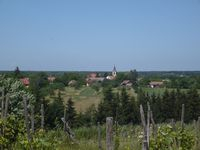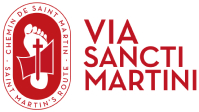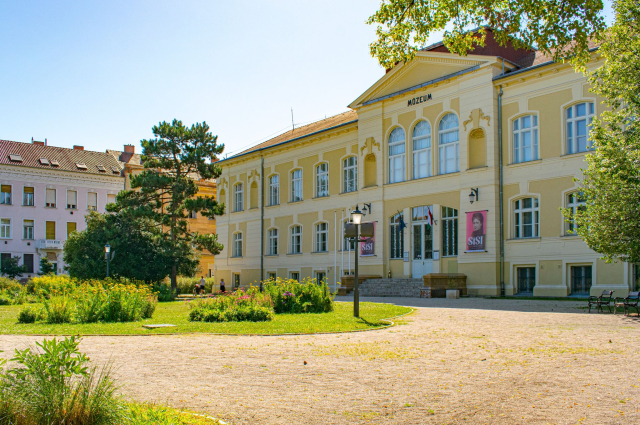
Stop point - Zalaháshegy

Its name was first mentioned in 1296, and in 1328 it appeared as "villa-Hasagh". The village is thought to have been named after the many lime trees in the area. Others believe it may have been named after the Hashagyi family.
The village was already a central place in the Árpád era, as is evidenced by the church built in this period, which has been rebuilt and renovated several times over the years. The Árpád-era church was for a time in the hands of the Protestants, but was later taken back from them. It was restored in 1736. The church seats 400, has a wooden choir and a bell on a separate belfry.
It remained an inhabited place in Turkish times, despite falling in the way of Turkish military movements. The village was owned by the Perneszy family. In 1790 it became the property of the Bessenyei family. The village first belonged to the Salomvar district, then after 1924 it became part of the district of Vaspor.
András Vályi wrote about the village in the late 1700s:
"Hungarian village in Zala County. The lord of the land is Baron Senyéi, the inhabitants are Catholics, it lies 1 mile from Lövő, its border is sandy and between the ravines it is thin.
Source: Wikipedia
Attractions:
- Church of the Holy Trinity (XIII c.)
The Romanesque-style church, now restored to its original splendour, is a fitting tribute to the Trinitarian god, in whose honour it was built and consecrated in the 1200s.
Unknown to many, Zalaháshágy lies on the border between Vas and Zala counties. The dense canopy of forests in the dimbes hilly landscape hides this little jewel box from the eyes of travellers speeding along the main road 86. But for the open-hearted, it offers visitors a chance to encounter God, to find their way around the grandeur of the past and the faith of our ancestors. Its foundations are typically placed on a prominent point of the settlement. It has been rebuilt and extended several times throughout history. The most recent renovation, in 2006, took care to ensure that the architectural features of earlier times were not lost. Thus, the south wall features mullioned, lancet-shaped windows and the now-abandoned gateway to the southern skyline, a characteristic feature of the Romanesque style. On the west side, the church tower, 23 m high, faces the sky and houses two bells.
As soon as the visitor enters the doorway, he finds the ancient sandstone font, also ancient, in the section below the choir. Our gaze is almost drawn to the harmony of the gleaming workings of the floor and the soft colours of the newly made pews. The walls of the single nave church are richly decorated, with paintings praising the work of Albin Stefek. From the ceiling, we can see the six holy figures looking down on us from heaven. And on the choir plinth, painted images of two Hungarian saints look down on us, indicating that they came from among us and became saints. In the centre of the nave, also in the north wall, is a sandstone relief. In the centre of the relief is the shape of a cross, surrounded by figures of various animals.
The saints in the nave, placed above benches, represent the saints praying with us and for us, and Jesus Christ. Before entering the sanctuary, a huge triumphal arch towers above us. It is painted with a wonderful message that Jesus, whose heart is on fire with love, is calling everyone, and some of us, accompanied by angels, are already coming to him. The altarpiece shows the Creator Father, the Redeemer Son and the Sanctifying Spirit.
The sanctuary opens onto a sacristy, added in the 1800s. It is not only a place of pride for Catholics, but for all Christians, as it was used by the local evangelical community during the Reformation. The silence of the village is an opportunity for all to quieten down and deepen their relationship with God.
Source : https://www.martinus.hu/nev-es-cimtar/plebaniak/281/zalahashagy-szentharomsag-filia
- Sibrik Chapel
Built in 1908 by Adorján Sibrik and his wife, Amália Szabó of Kiskölkedi, who owned estates in Szarvaskend and óvar. The chapel, which is highly respected by the local population, is used for holy masses twice a year, on Pentecost and on the feast of King St. Stephen.
- Zalaháshegy

